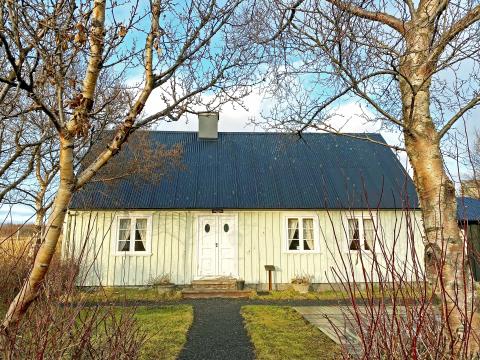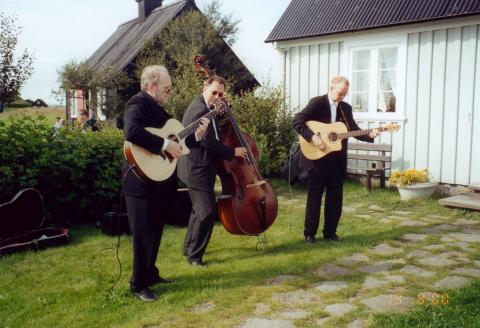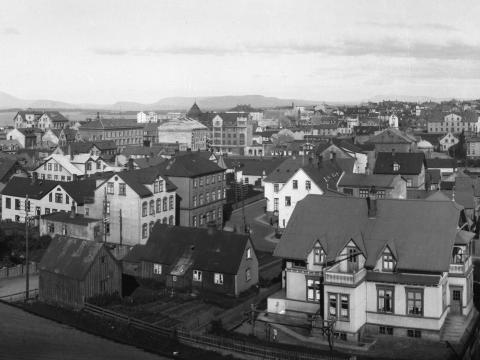
Dillon's House is a Danish-Icelandic style timber house built in 1835 on the corner of Túngata and Suðurgata. It takes its name from the man who raised it, Arthur E. D. Dillon. He was a young, English-Irish man of noble descent who lived there during the long winter of 1834. Here, he met and fell in love with an Icelandic woman named Sire Ottesen. Unable to marry, Dillon left the country in 1835 but gifted the house to Sire and their daughter. Sire went on to run a restaurant there, hosting dances and renting out rooms. Dillon's House was moved to the Árbær Open Air Museum in 1961, where it now houses the museum coffee shop.


Dillon's house is named after the English-Irish nobleman Arthur E.D. Dillon or Lord Dillon. He was the younger son of Viscount Dillon. He came to Iceland in 1834 to explore the country and its people and write a travel book. He rented a room from a storekeeper in town. He ate at The Club, a restaurant and meeting place in south Aðalstræti, where the Salvation Army later built a large house. Sigríður Ottesen, or Sire like she liked to be called, ran The Club. Sire was a divorced mother of two. She was quite a bit older than Dillon,12 years older than the 22-year-old English-Irish man. Earlier in the winter of 1834, she and the Prince Royal of Denmark, Frederick, had a brief relationship when he had been shipped to Iceland after it was known he had been in a relationship with a ballet dancer in Copenhagen. Frederick took the same ship back as had brought Lord Dillon to the country. Sire and Dillon quickly became romantically involved, and he moved to The Club. Shortly after that, Sire became pregnant.
Sire had a baby girl in June, who was named Henrietta after Dillon's mother. Later that year, they moved to a brand-new house on the corner of Suðurgata and Túngata. There they lived together for a while. Dillon wanted to marry Sire but had to apply for a marriage licence from the Danish chancellery because he was Catholic. It is believed that due to the influence of the Dillon family, the application was denied. In the fall of 1835, Dillon went back home. The people of Reykjavík supposedly gossiped ruthlessly about the couple.
When he was home, he began writing his travel story, and it was published in 1840. Sire and his daughter weren't mentioned at all in the book. Sire provided for her and her daughter by keeping a restaurant and meeting place in Dillon's House, as it was known by then. She held popular balls and rented rooms. Among these renters was the national poet Jónas Hallgrímsson, who lived there during 1841-42. Dillon kept in touch with his daughter, and they corresponded for many years. It is believed she visited her father in England in 1875, and her son, Pétur Arthur, went to an Officer School in England with the help of Dillon. Lord Dillon left Sire and his daughter a considerable amount of money in his will. Around 1850, Sire cut down the restaurant business and rented out more rooms of the house instead. Among the renters were the sisters Ágústa and Þóra Grímsdóttir, who opened the first girl's college in Iceland in 1851-53. The school didn't succeed financially and was closed down. Þóra later married Páll Melsteð, and together they opened the current girl's college (Kvennaskólinn í Reykjavík) in 1874.
Sire died in Reykjavík in 1878 and her daughter seven years later. Lord Dillon died in 1892.

